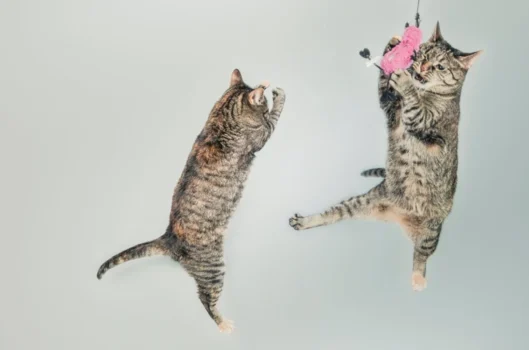As a cat owner, you may have heard of the term ‘clicker training’ and wondered what it entails. Clicker training has been gaining popularity as an effective and humane way of training pets. If you own a California Spangled cat and are looking for ways to teach them new tricks or improve their behavior, clicker training might be just what you need. In this article, we’ll explore the basics of clicker training, how it works for cats, and provide useful tips to get started with clicker training your California Spangled cat. So, buckle up and get ready to embark on an exciting journey of cat training!
What is Clicker Training?
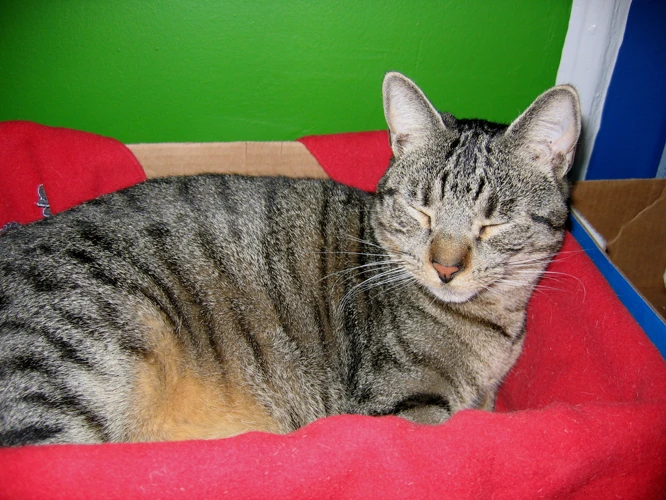
If you’re looking for a positive and effective way to train your California Spangled cat, one of the best methods to explore is clicker training. Clicker training is a reward-based approach that uses a handheld clicker to provide feedback to your cat for good behavior. It’s a fun and engaging way to teach your feline friend new skills and tricks while strengthening your bond with them. In this section, we’ll explore the basics of clicker training and how it works for cats. If you want to learn more about the benefits of clicker training for your Cali Spangled cat, check out our clicker training guide.
The basics of clicker training
Clicker training is a positive reinforcement training method that utilizes a clicker as a marker for desired behavior in cats. The basic principle of clicker training is to “click” and reward your California Spangled cat when they perform the desired behavior, eventually leading to them repeating the behavior to receive the reward. This concept is based on the idea that positive reinforcement teaches cats to voluntarily engage in desirable behaviors, rather than forcing them to comply through negative reinforcement or punishment.
The basics of clicker training for California Spangled cats include:
- Choosing a quiet training location where your cat can focus without distractions.
- Introducing the clicker to your cat by clicking the device and immediately providing a treat to create an association between the sound of the clicker and the reward.
- Breaking down the desired behavior into small achievable steps, then gradually increasing the complexity of the behavior.
- Using a variety of high-value treats as a reward, such as small pieces of chicken or freeze-dried fish.
- Timing your clicks to coincide with the desired behavior you want to reinforce. Click immediately after they perform the desired behavior, then reward with a treat.
- Ensuring consistency in your training sessions by keeping them short and frequent, ideally in five-minute increments, and repeating the training each day.
By using clicker training methods, you can enhance your cat’s intelligence, stimulate their brain, and improve their overall behavior. It is an effective and humane method of training, particularly for California Spangled cats who may be prone to anxiety or fear-based behaviors. However, it’s essential to avoid making common clicker training mistakes, which could impede your training progress. Check out our cat clicker training guide for more in-depth information on clicker training, tips, and tricks to avoid mistakes, investigate California Spangled clicker training tips, learn advanced clicker training techniques for cats and discover the difference between clicker training and traditional training techniques.
How it works for cats
Clicker training for cats is a form of operant conditioning that involves the use of a clicker – a small device that makes a distinct sound – to mark a behavior followed by a reward. Cats are intelligent animals that can learn through repetition and positive reinforcement.
How does clicker training work for cats?
- The clicker is used as a cue to let the cat know that they have performed the desired behavior.
- Once the cat hears the clicker sound, they associate it with positive reinforcement, such as treats or praise. This creates an incentive for the cat to repeat the behavior.
- Clicker training can be used for a range of cat behaviors, such as sitting, coming when called, or even using a litter box correctly.
- The goal of clicker training is to create a positive learning experience for the cat, which leads to a stronger bond between the cat and their owner.
Using clicker training for your California Spangled cat can be especially effective due to their playful nature and high energy levels. With clicker training, you can channel their energy into learning new behaviors and tricks.
However, it’s important to note that clicker training requires patience and consistency. It may take time for your cat to understand what behavior you want them to perform, but with repetition and positive reinforcement, they will learn.
Remember to keep the training sessions short and fun for your cat. Breaking up the training into short sessions throughout the day will help prevent your cat from becoming bored or overwhelmed.
If you want to learn more about common mistakes to avoid when clicker training your California Spangled cat, you can check out our article on “/clicker-training-california-spangled-cats-mistakes/”. And if you’re looking to train a cat that has fear or anxiety issues, you can read our article on “/train-california-spangled-cat-fear-anxiety-clicker/”. Alternatively, if you’re interested in the science behind clicker training for cats, check out our article on “/sci-clicker-training-california-spangled-cats/”.
Getting Started with Clicker Training
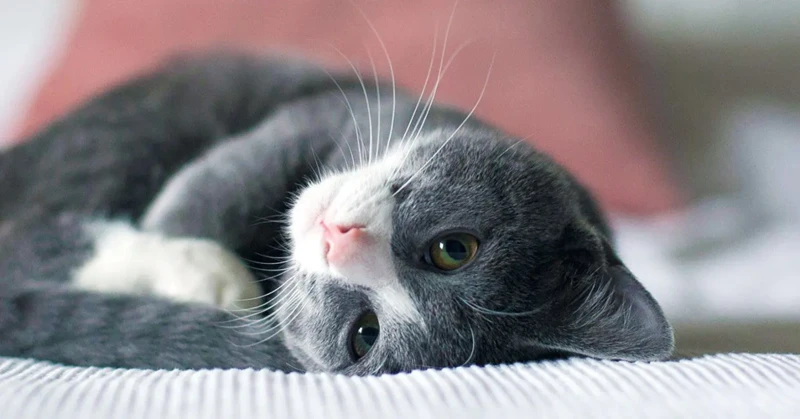
Now that you understand the basics of clicker training for cats, it’s time to get started! This section will guide you through the steps to prepare for your training sessions, introduce your cat to the clicker, and establish a training schedule. By following these steps, your California Spangled cat will be well on their way to learning new behaviors through positive reinforcement. So, let’s get started!
Gather Supplies
Before beginning clicker training with your California Spangled cat, you’ll need to gather a few supplies to ensure your training sessions run smoothly. Here are some essential supplies you should get:
- A clicker: the most important element of clicker training is the clicker itself. You can find affordable clickers at pet supply stores or online. It’s important to choose a clicker with a loud and distinct sound that your cat can easily hear over other environmental noises.
- Treats: as clicker training is based on positive reinforcement, you will need to have treats on hand to reward your cat for desired behaviors. Choose healthy, low-calorie treats that your cat loves, as it will increase their motivation to learn new behaviors.
- A target stick: using a target stick allows you to direct your cat where to move. Target sticks can be purchased at pet stores or you can make your own by attaching a small object to the end of a chopstick.
- A quiet training area: choose a peaceful and quiet area to train your cat where there are minimal distractions. This will help your cat to focus on the training and lead to more effective results.
Gathering these supplies ahead of time will help you to keep your training sessions organized and make the most of your time with your California Spangled cat. With these supplies in hand, you’ll be well prepared to start clicker training your feline friend!
Introduce Clicker Training to Your Cat
Before beginning clicker training with your California Spangled Cat, it is important to introduce them to the clicker. Here are the steps to follow:
- Step 1: Introduce the clicker – Allow your cat to sniff the clicker to become familiar with its appearance and scent.
- Step 2: Associate the click sound with rewards – Press the clicker and immediately give your cat a treat. Repeat this several times until they start to associate the sound with receiving a treat.
- Step 3: Practice several times a day – Practice using the clicker and treat reward system several times a day to reinforce the association. Gradually increase the time between the click and reward so that your cat understands that the click is a cue for good behavior.
It is important to note that the clicker should only be used as a cue for positive behavior and never as a form of punishment. By introducing your California Spangled Cat to the clicker in a positive and gradual manner, they will be more receptive to the training process and more likely to succeed. Remember to always keep the training sessions short and end on a positive note to maintain your cat’s interest and motivation.
Decide on a Schedule
When it comes to clicker training your California Spangled cat, it’s essential to decide on a training schedule that works for both you and your feline friend. Here are some tips on how to set up a schedule that will help you make the most out of your cat’s training.
1. Determine how often you will train your cat. Consistency is crucial in clicker training. You don’t need to train your cat for hours on end. It’s better to have several short training sessions throughout the day than one long one. A good starting point is two to three sessions per day, each lasting no more than 10-15 minutes.
2. Choose the best time to train your cat. Cats are known for their independence and can sometimes be less responsive when they’re not in the mood for training. Choose a time when your cat is alert and playful, such as after a nap or a meal. This way, your cat will be more willing to learn and participate in the training.
3. Decide on the duration of your training sessions. Cats have short attention spans. Keep each training session brief, focusing on one or two behaviors at a time. As your cat becomes more proficient in the behaviors, you can gradually increase the length of your training sessions.
4. Stick to your schedule. Once you have decided on a training schedule, stick to it as much as possible. Consistency is key to helping your cat learn. If you miss a training session, don’t worry. Pick up where you left off, and your cat will quickly get back into the swing of things.
By setting up a training schedule that works for both you and your cat, you’ll be able to make the most out of your clicker training sessions. Remember to keep the training sessions short and focused, and be consistent in your approach. With patience and dedication, your California Spangled cat will be performing tricks in no time!
Training Tips for California Spangled Cats
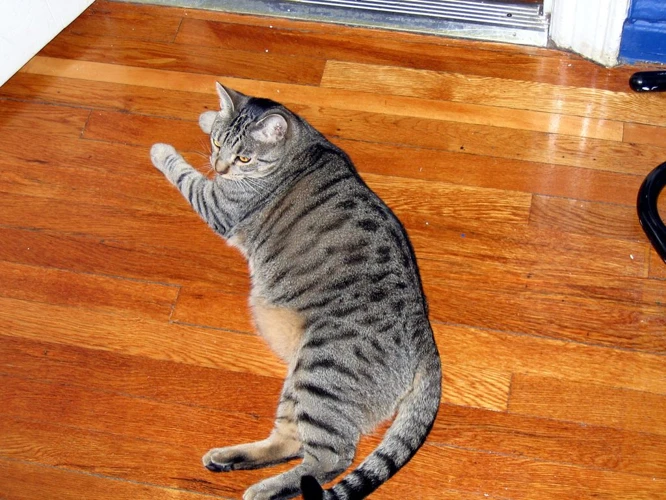
Training your California Spangled cat with clicker training can be a fun and rewarding experience for both you and your feline companion. However, it’s important to keep in mind that each cat is unique and may respond differently to training techniques. To ensure success, it’s important to focus on positive reinforcement, keep training sessions short, and be consistent with your training methods. Below are some tips to keep in mind while training your California Spangled cat with clicker training.
Focus on Positive Reinforcement
Positive reinforcement is the backbone of clicker training, and it involves rewarding your California Spangled cat for good behavior. This method is a humane and effective way to train cats, which recommends using treats as a reward. However, it’s important to choose the right type of treat for your cat. Some cats may prefer crunchy treats, while others may prefer soft ones. Also, make sure to limit the number of treats to avoid overfeeding your feline friend.
To effectively use positive reinforcement in your clicker training, you should start by identifying behaviors that you want to encourage. For example, if you want your cat to stop scratching the furniture, you can click the clicker when you see them scratching the scratching post instead. Once your cat hears the sound of the clicker, follow it up with a treat and pets or praise.
Here are some tips to focus on positive reinforcement:
- Use high-value treats that your cat loves
- Click the clicker immediately when you see the desired behavior
- Be consistent with your rewards
- Stay patient and avoid punishing your cat for undesired behavior
The goal of positive reinforcement is to create a positive association between the desired behavior and the reward, making your cat more likely to repeat the behavior in the future. With consistent training, your California Spangled cat will learn to associate the sound of the clicker with good behavior and will work hard to earn the reward. Remember, training takes time and patience. So, stay committed and focus on the progress, not perfection.
Keep Training Sessions Short
It’s important to remember to keep the training sessions for your California Spangled Cat short in order to maintain their attention and focus. Overly long training sessions can cause your cat to become bored or frustrated, and they may not retain the new information you are trying to teach them. Here are some tips for keeping your training sessions brief but effective:
- Start with shorter sessions: When you first begin training your cat, limit each training session to just a few minutes at a time. Gradually, you can increase the length of each session as your cat becomes more comfortable with the training process.
- Break up training throughout the day: Instead of one long training session, try breaking up your training into several shorter sessions throughout the day. This will help keep your cat engaged and prevent them from becoming fatigued.
- Stay positive and end on a good note: Always end your training sessions on a positive note – even if your cat didn’t quite get the behavior you were working on. End the session with a successful behavior and reward your cat for their efforts. This will leave your kitty feeling good about the session and excited for future training.
- Keep it simple: Focus on just one behavior at a time during each short training session. Keep the training simple and easy to follow so that your cat can understand what you are asking of them.
- Make it fun: Use toys and treats to keep your cat excited and engaged during the training sessions. You can even turn the training into a game or a fun challenge to make it more enjoyable for your kitty.
Remember, the key to successful training with your California Spangled Cat is to keep them engaged and motivated. By keeping the training sessions short and fun, you can help your kitty learn new behaviors and tricks with ease.
Be Consistent
Consistency is key when it comes to clicker training your California Spangled cat. It’s important to establish a routine for training sessions and to stick to it. Here are some tips to help you remain consistent:
- Schedule training sessions: Schedule regular training sessions with your California Spangled cat and stick to it. Consistency in timing will help establish a routine and help your cat know when it’s time to focus and learn.
- Use the same command and reward: When teaching a particular behavior to your cat, be consistent with the command you use to elicit the behavior. For example, if you want your cat to sit, always use the same command word like “sit” and reward your cat each time it sits on command. This consistency is important, as it helps to reinforce the association between the command and the behavior you’re trying to teach.
- Reinforce the same behaviors: Continue to reinforce the same behaviors that you’ve already taught your cat. This will prevent your cat from becoming confused, and will also help to solidify the behaviors in your cat’s mind. As your cat progresses, you can introduce new behaviors, but it’s important to keep reinforcing the old ones.
- Avoid changes in the environment: Keep distractions to a minimum by training your cat in a quiet, familiar place where it won’t be tempted to run off or explore. Avoid changing the environment too much in the beginning, as this can cause confusion and disrupt the training process.
- Patience: Be patient with your cat and avoid punishing it if it doesn’t do what you want it to do right away. Remember to reinforce the behavior that you do want, and try again later or the next day.
By being consistent in your approach to clicker training, you’ll help your California Spangled cat to understand what you want it to do and learn new behaviors more quickly and effectively. Consistency is an important part of any training regimen, whether you’re training a cat or any other animal.
Advanced Clicker Training Techniques
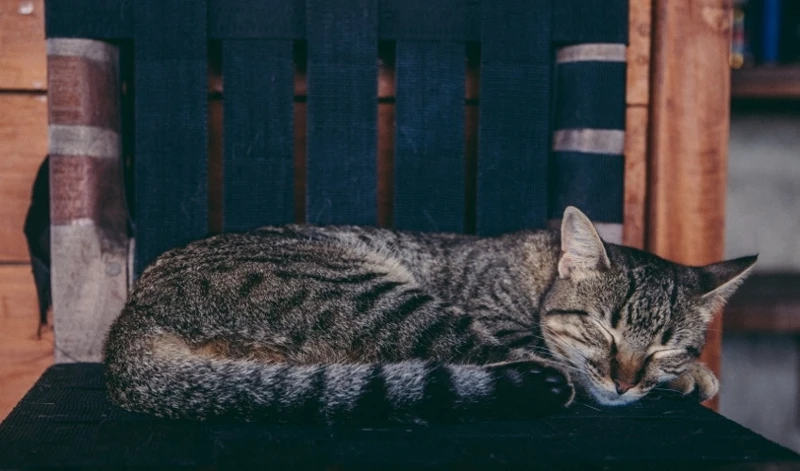
As you become more experienced with clicker training, you may start to explore more advanced techniques to challenge your California Spangled cat and enhance their skills. By incorporating these advanced clicker training techniques into your training routine, you can take your cat’s training to the next level and build an even stronger bond with your furry friend. Let’s take a look at some advanced techniques you can try out.
Shape Behaviors
One of the more advanced clicker training techniques is known as shaping. This method involves breaking down a desired behavior into smaller steps and teaching your cat to perform each step before putting them all together. Here are some tips for shaping behaviors in your California Spangled cat:
- Start with the end goal in mind: Decide on the behavior you want to teach, and then determine the small steps needed to achieve it.
- Work on one step at a time: Begin by clicking and rewarding your cat for performing the first step. Once they have mastered that step, move on to the next one.
- Be patient: Shaping a behavior can take time, so do not get frustrated if your cat is slow to grasp a particular step.
- Use a high-value reward: Since shaping can take longer than other training methods, make sure to use a reward that your cat really loves, such as a special treat or toy.
- Gradually increase difficulty: Once your cat is comfortable with a particular step, begin increasing the difficulty by adding in more steps or by making the task more challenging.
- Generalize the behavior: Once your cat has mastered the behavior in one location, begin practicing it in different areas to ensure that they understand the behavior in different contexts.
By using the shaping technique, you can teach your California Spangled cat a wide variety of complex behaviors, such as opening doors or turning on lights. Remember to be patient and to work on one step at a time. With practice, your cat will be able to perform impressive feats through the power of clicker training.
Teach Tricks
One of the most exciting parts of clicker training your California Spangled cat is teaching them tricks. Tricks are a great way to bond with your cat and show off their intelligence to friends and family. Here are some tips for teaching your California Spangled cat tricks:
| Tips for Teaching Tricks |
|---|
| Start Simple: Begin with basic tricks like “sit” or “shake.” |
| Use Treats: Make sure to have plenty of treats on hand to reward your cat for their efforts. |
| Be Patient: Remember that learning new tricks takes time and patience. Don’t get frustrated if your cat doesn’t get it right away. |
| Build on Success: Once your cat has mastered a basic trick, build on it to teach more complex tricks. |
| Keep it Short: Just like training sessions, keep trick sessions short to maintain your cat’s focus and interest. |
| Use a Release Cue: Teach your cat a release cue like “OK” to let them know when the trick is over. |
| Have Fun: Most importantly, have fun! Remember that trick training is a great way to bond with your cat and improve your relationship. |
Once your California Spangled cat has learned some basic tricks, you can start teaching them more advanced tricks like jumping through hoops or even playing dead. Always remember to use positive reinforcement and never resort to punishment or negative reinforcement. With time and patience, your California Spangled cat will become a trick master and enjoy showing off their skills to everyone.
Training Multiple Cats
Training multiple cats can be a bit more challenging, but it is definitely manageable. One important thing to keep in mind is that each cat is unique and will have different learning styles. Here are some tips for clicker training multiple cats:
| Tip | Description |
|---|---|
| Separate Training Sessions | It can be difficult to train multiple cats at the same time, especially if they have different training needs. It is important to separate each cat for individual training sessions. This will ensure that each cat is getting the attention and training they need. |
| Use Different Clicker Sounds | Since cats may be able to hear sounds that humans cannot, it is a good idea to use different clicker sounds for each cat. This can help prevent confusion and ensure that each cat is responding to their own clicker sound. |
| Train in Different Areas | Training in different areas can also help prevent confusion. Each cat should have their own designated training area that is free of distractions. |
| Patience and Consistency | Training multiple cats will take patience and consistency. Each cat may learn at a different pace, so it is important to be patient and not get frustrated if one cat is progressing slower than the other. |
Keep in mind that training multiple cats at once is not always necessary and may not be feasible in certain situations. It’s important to assess your own cats’ individual needs and determine the best approach for them. By following these tips, you can help ensure that each of your cats gets the attention and training they deserve.
Troubleshooting Common Issues
As with any type of training, clicker training your California Spangled Cat may come with its own set of challenges. However, with patience and consistency, these issues can be addressed and overcome. In this section, we will explore some common issues that cat owners may encounter during clicker training and provide tips on how to troubleshoot them. From avoiding punishment to addressing fearful or aggressive behaviors, we’ve got you covered. Let’s dive in and address these issues together.
Avoid Punishment
When clicker training your California Spangled cat, it is important to remember that punishment should be avoided. This means refraining from physical discipline, such as hitting or scruffing your cat, or using verbal punishment, such as yelling or scolding. Punishment may work in the short term, but it can harm the bond between you and your cat and may cause fear or anxiety.
Here are some reasons why you should avoid punishment when clicker training your California Spangled cat:
- It can cause fear: Your cat may become afraid of you and the training process if punishment is used, leading to a breakdown in trust and communication.
- It can harm the relationship: Punishment can create a negative association between you and your cat, making it difficult to build a strong, positive bond.
- It can lead to aggressive behavior: Using punishment may cause your cat to develop aggressive behaviors, as a defensive response to the perceived threat.
- It may not be effective: Punishment alone is not an effective training method and may lead to frustration for both you and your cat.
Instead of punishment, it is important to focus on positive reinforcement when clicker training your California Spangled cat. Positive reinforcement involves rewarding your cat for good behavior, such as using treats or praise. This encourages your cat to repeat the desired behavior and strengthens the bond between you.
Punishment should be avoided when clicker training your California Spangled cat due to its potential to cause fear, harm the relationship, lead to aggressive behavior, and be ineffective. Positive reinforcement is a more effective and humane training method that rewards good behavior and strengthens the bond between you and your cat.
Addressing Fearful or Aggressive Behaviors
Dealing with fearful or aggressive behaviors in cats during clicker training can be a bit challenging, but it’s not something that can’t be addressed. If your California Spangled cat is exhibiting such behaviors, it’s important to identify the underlying cause of their fear or aggression to help you find the right approach for correcting it. Here are some tips to help you deal with fearful or aggressive behaviors in your cat:
| Tip | Description |
|---|---|
| 1. Identify triggers | Observe your cat during training sessions to identify what triggers their fearful or aggressive behavior. Common triggers include loud noises, sudden movements or actions, unfamiliar people or animals, among other things. By knowing what causes their fear or aggression, you can avoid or prepare for such situations. |
| 2. Gradual desensitization | This involves gradually exposing your cat to the triggers that cause their fear or aggression while using clicker training to teach them alternative behaviors, such as sit or stay, to reduce their stress. Increase exposure to the triggers slowly and always reward good behavior to reinforce positive associations. |
| 3. Seek professional help | If your California Spangled cat’s fear or aggression is severe or persistent, it’s advisable to seek help from a professional cat behaviorist or a veterinarian who specializes in cat behavior. Such experts will assess your cat’s behavior and recommend a suitable training plan to correct the problem safely and effectively. |
It’s important to remember not to resort to punishment, physical or verbal, as it is not only ineffective but can also cause more harm than good. Be patient, consistent, and understanding of your cat’s needs and reactions during clicker training. Addressing fearful or aggressive behaviors in California Spangled cats during clicker training requires a meticulous environment that builds confidence in the cat and desensitizes them to the triggers that cause their fear or aggression.
Conclusion
In conclusion, clicker training is an effective and humane way to train your California Spangled cat. By using positive reinforcement techniques, you can teach your feline friend to perform desired behaviors and tricks without causing stress or fear. Remember to keep training sessions short and to be consistent in your approach. Use rewards such as treats, toys, and affection to reinforce good behavior.
If you encounter any issues during training, avoid punishment and address any fearful or aggressive behaviors with patience and understanding. With some practice, you can use advanced clicker training techniques such as shaping behaviors and teaching tricks to keep your cat mentally stimulated and engaged.
Overall, clicker training is a great way to bond with your California Spangled cat and to improve their behavior and well-being. By establishing a regular training schedule and using positive reinforcement, you can create a happier and more well-behaved pet. So, grab your clicker and treat bag and start training your feline companion today!
Frequently Asked Questions
What is the California Spangled Cat breed?
The California Spangled Cat is a domestic breed developed in the 1980s to resemble wild leopard cats. This breed is known for its muscular build, short coat, and unique spotted pattern.
Can any cat breed be trained using clicker training?
Yes, clicker training can be used with any cat breed. However, some cats may respond better to clicker training than others.
How often should I train my California Spangled Cat?
Training sessions should be short and frequent. Aim for 5-10 minute sessions, 2-3 times per day.
What supplies do I need for clicker training my California Spangled Cat?
You will need a clicker, treats, and a target stick. Treats should be small and bite-sized.
What is positive reinforcement?
Positive reinforcement is a training method that encourages desirable behavior through the use of rewards. In clicker training, treats are often used as a form of positive reinforcement.
What should I do if my cat becomes afraid during clicker training?
If your cat becomes afraid, stop training immediately and give your cat a break. Reintroduce the clicker and target stick slowly, and begin training in a calmer environment.
Can I use punishment in clicker training?
No, punishment should not be used in clicker training. Punishment can cause fear and anxiety in cats, making them less likely to respond positively to training.
Should I train my California Spangled Cat indoors or outdoors?
It is recommended to train your California Spangled Cat indoors, in a quiet and distraction-free environment.
How long does it typically take to train a cat using clicker training?
The length of time it takes to train a cat using clicker training varies based on the individual cat. Practice patience and consistency, and focus on reinforcing positive behaviors.
What are some common tricks that can be taught using clicker training?
Common tricks that can be taught using clicker training include high-fives, playing dead, and jumping through hoops.

